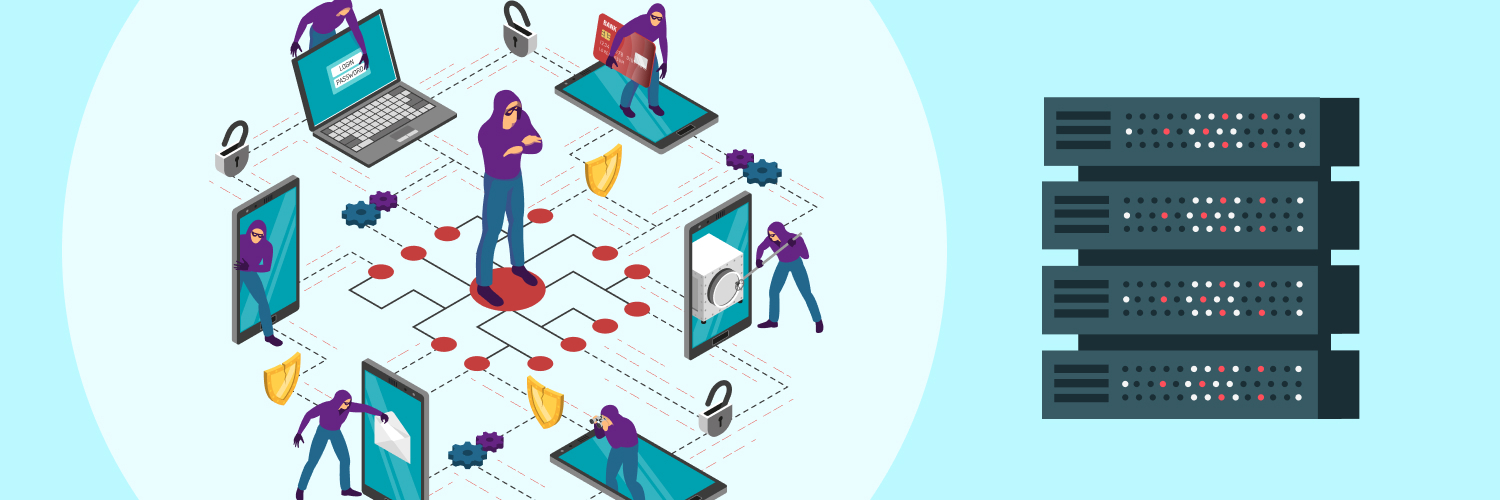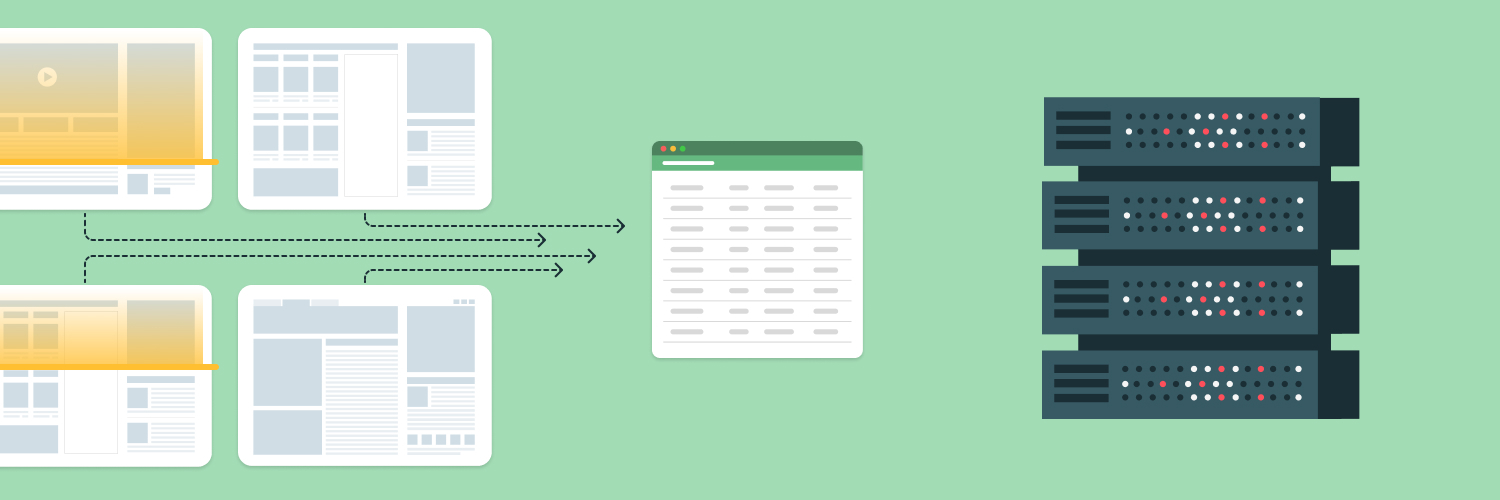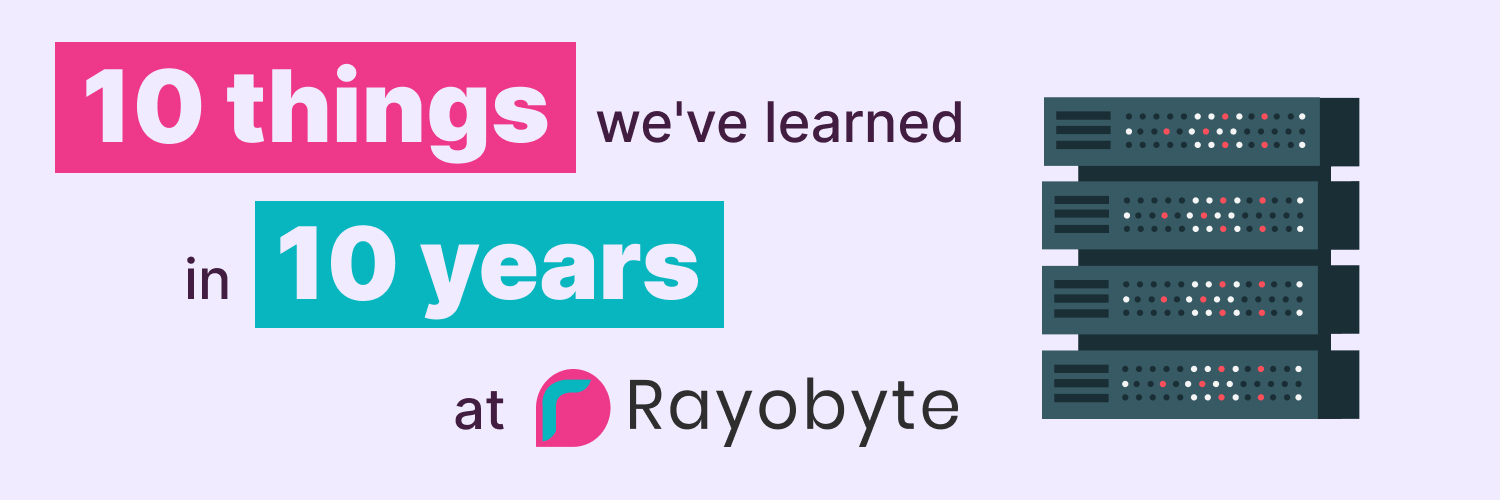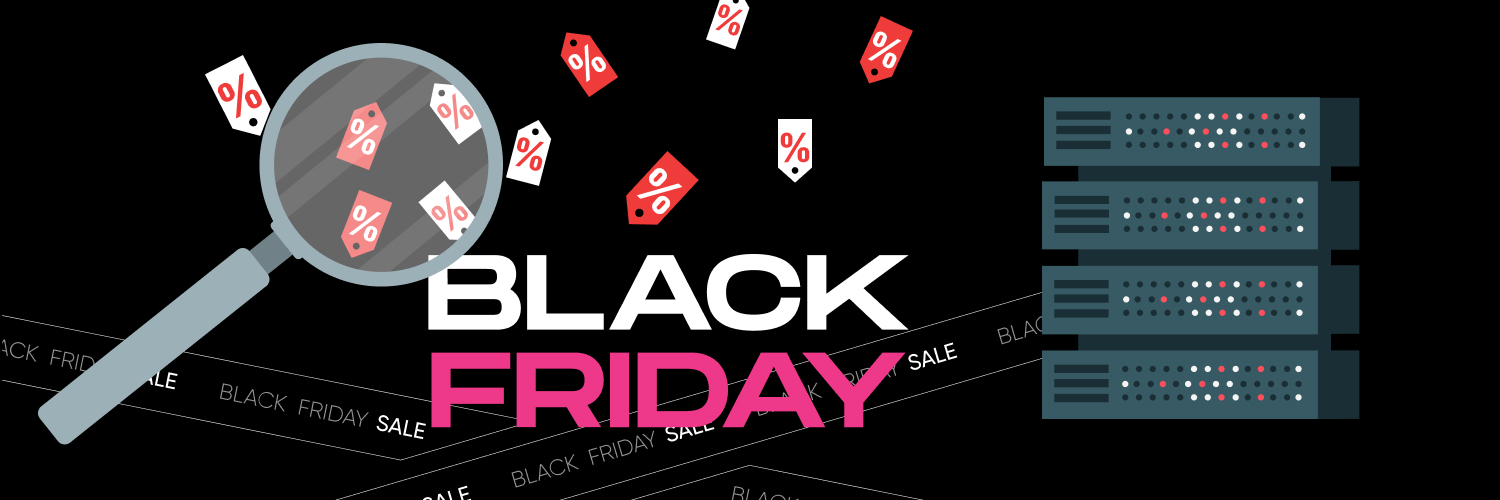How Time Series Data And Proxies Work Together
Time series data is a sequence of data points measured at successive points in time. It is often used to measure the change in a variable over time. This type of data can be gathered from many different sources, including websites, financial institutions, and government agencies.
This post will teach you what time series data is and how to gather it using proxies and web scraping techniques. We will also provide time series data examples for you to explore. Feel free to use the table of contents if you want to skip ahead.
What Is Time Series Data?

Also referred to as time-stamped data, time series data measures sequences of data points indexed in time order. Time series data aims to understand how a particular variable changes over time. This data can be measured at regular intervals (e.g., hourly, daily, weekly, monthly) or irregular intervals (e.g., quarterly, annually).
Time series data is often used in predictive modeling and forecasting because it can provide insights into future trends. For example, if a company wants to predict future sales, it would use time series data to understand past sales patterns. This information can then be used to develop a model that predicts future sales.
In almost any industry and business, you can analyze time series data. It is a constituent of everything that can be observed, and as the world continues to collect more data through instruments, sensors, and systems, the amount of time series data grows.
You can find examples of time series data in any of the following:
- Stocks
- Sunspots
- Retail sales
- Monthly subscribers
- Heartbeats
- Rainfall
- Electric activity in the brain
One of the most powerful applications of time series data is the ability to forecast. Businesses in every industry use time series data to predict future behavior.
This could be as simple as predicting the weather tomorrow or forecasting the sales for the next quarter. Time series data is used to identify patterns in historical data and then use those patterns to predict future behavior.
This information can shape pricing, inventory, and marketing strategies. Businesses that can accurately forecast their sales, inventory, and expenses are more likely to be successful than those that cannot.
What Are The Features of Time Series Data?

You can understand and spot time series data examples by a set of features that help define it. Once you know these features, you’ll be able to recognize and measure time series data points more quickly and use them for your business more efficiently.
Time period
As the name suggests, the time period is the feature that differentiates time series data from other types of data. This is what makes time series special: the ability to observe and measure change over a period of time.
You can use this feature to your advantage by understanding how long the changes you’re measuring take place and how frequently they occur. This will help you predict when the changes will happen in the future and plan accordingly.
Measurements can be as short as a minute or as long as a century. The starting and end points are all that are needed to create a time series data collection. Any data points between the starting and end points are known as the time period.
Frequency
Frequency refers to the number of data points collected within a certain time period. For example, if you measure monthly sales, the frequency would be 12 data points per year.
The frequency of your time series data will depend on how often you want to measure the variable you’re interested in. If you want to measure a company’s stock price every hour, you would need to collect data at a high frequency. On the other hand, if you’re interested in measuring monthly sales, you can collect data at a lower frequency.
For a time series data collection to be meaningful to a business, it must be equal and clearly defined. These parameters produce a constant frequency so that anyone reading the data can observe how the features are related.
Frequency can be defined in any time increment, including milliseconds to decades, but the most common are daily, monthly, quarterly, and annually.
Patterns
The last major feature of time series data is patterns. The expectation is that the pattern of the time series data will persist in the future.
This is why time series data is often used for predictive modeling and forecasting. If a business can identify patterns in the data, it can use those patterns to predict what will happen in the future.
There are two types of patterns that businesses look for when analyzing time series data: seasonality and trend.
Seasonality is a repeating pattern that happens at a particular time of year, like when retail businesses see an increase in sales during the holiday season.
A trend is a long-term direction that the data is moving in. For example, you might notice that a company’s stock price has been steadily increasing over the past year.
Both of these patterns can be helpful for businesses when predicting future behavior. Now that you understand the basics of time series data, you can start looking at real-life examples that will help you relate to the data points more easily.
Types of Time Series Data

There are four major types of time series data:
- Regular intervals
- Irregular intervals
- Linear
- Nonlinear
Each type has a specific purpose and is used in different ways.
Regular time intervals
Most of the information businesses use, like sales data, forecasting, and inventory management, is collected at consistent and equal intervals, usually daily, weekly, monthly, etc.
Regular time intervals are the most consistent way to gather data and can provide the most reliable predictions of future behavior. You can categorize this time interval as a metric, which makes up a large part of business intelligence.
Without the ability to measure data points at regular intervals, businesses would not be able to track their progress or growth over time. Time series data that does not follow this definition is classified as irregular, which has its own unique advantages.
Irregular time intervals
Whenever data is gathered at an irregular time interval, it is classified as such. While this information may be harder to work with, it can still provide businesses with valuable insights.
For example, data gathered in real time is not measured at regular intervals. Whenever there is a response in a system (such as logging website visitors), that is when a data point is collected. This cannot be predicted as someone could visit your website today, and you could not receive another visit for the next week.
Although it’s not as continuous as regular time intervals, businesses and other industries can still use this data to understand how their systems are being used or whether or not there is a problem. This type of collection is seen as an event since it is not a clear metric you can track.
Linear
Linear time-series data is a combination of past or future values or differences aligned with each data point. This type of data is often used in econometrics, which uses historical data to predict future economic activity.
Businesses also use this method to predict inventory needs, sales patterns, and trends. While this data can be helpful, it is important to remember that it only looks at past values, not current conditions.
Nonlinear
Generated by nonlinear dynamic equations, this data type cannot be modeled by a linear process. You won’t be able to use asymmetric cycles, time-changing variances, high-moment structures, thresholds, or breaks.
If you are gathering data and the regression equation doesn’t follow any of the rules set forth by a linear model, you are working with a nonlinear model. The advantage of this data set is that it can fit a wide variety of curves.
Examples of Time Series Data

It can be challenging to understand how to apply time series data to your own business if you’ve never seen it before. To help give you a better idea of what time series data looks like, we’ve compiled a list of examples:
Sales data
One of the most common applications for time series data is sales data. Businesses use sales data to track performance over time and identify patterns that can be used to predict future behavior.
Sales data is usually collected monthly or quarterly and can measure total revenue, average order value, and the number of orders.
Multiple data points are collected over a period of time. As businesses collect the data, they can see trends and seasonality in their sales data.
This information can help in analyzing time series data for pricing, inventory, and marketing.
Stock prices
Another common example of time series data is stock prices. Stock prices are measured at a high frequency (usually every minute) and can be used to track the performance of a company’s stock.
Stock prices are often collected from an exchange and can be used to measure things like the opening price, closing price, highest price, and lowest price. Traders and brokers who trade daily will look at the most frequent data to make decisions about buying and selling.
However, investors looking at a company’s long-term performance will examine data points that are collected less frequently (like monthly or quarterly). Both patterns are helpful when investing in the stock market, but the frequency of data will depend on the investment method.
Weather prediction
Meteorologists use time series data to predict the weather. They collect data points like temperature, humidity, wind speed, and atmospheric pressure at a high frequency (usually every hour).
This data is collected to identify patterns in the weather. Meteorologists use these patterns to make predictions about future weather conditions. This is how the local weatherman can predict whether it will rain that day or if snow is in the forecast for later in the week. This information is put to use when deciding things like whether to cancel outdoor events or how to dress for the day.
Because the weather is constantly changing and highly unpredictable, meteorologists must constantly collect data to make the most accurate predictions possible.
Finance
Time series data has significant applications in the world of finance. Financial institutions use time series data to track the performance of investments, measure economic indicators, and predict future behavior.
Banks use time series data to track interest rates, inflation, and exchange rates and use the information to make decisions about lending money and setting mortgage rates. Investors use time series data to track the performance of stocks, bonds, and other investments and decide whether to buy or sell. Economists can use time series data to measure economic indicators like gross domestic product (GDP) and unemployment and then make predictions about the economy.
Health monitoring
When patients in a hospital are connected to an ECG machine, it measures their heart rate over time and is an example of time series data. Every heartbeat is recorded and added as a data point so that, over time, doctors and nurses can tell if the heart rate is increasing or decreasing.
Hospitals use this information to track the health of their patients and make decisions about their care. For example, if a patient’s heart rate suddenly drops, the hospital will know and can take action.
This type of data is also used to monitor things like blood pressure and oxygen levels, and all of these data points are often used together to form a diagnosis.
Logs
Logs can register events, processes, messages, or communication between two software applications. They are a sequence of records that can help track the activities of a system.
For example, when you make a phone call, your phone will create a log of that call. This log will include information like the date and time of the call, the duration, and who you called.
This information is then used to generate bills, track trends, and understand a phone system’s behavior.
Similarly, when you visit a website, your computer will create a log of that visit. This log will include information like the date and time of the visit, how long you stayed on the website, and which pages you visited.
Developers and IT staff will scrape this information to resolve computer issues, and it is integral to understanding the problems within an operating system.
Traces
Similar to logs, traces are a sequence of records that track the activities of a system. The main difference between logs and traces is that traces include more detailed information.
Tracing follows a program’s flow and data progression and encompasses a large and continuous view of an application. This can help developers find bugs in programs or applications. A trace can be used in web scraping to view the data in real time.
Considerations of Time Series Data

Time series data is always recorded in time order, and because of this, there will always be an associated new entry. You’ll always find that time series data is immutable and append-only, meaning it is appended to the existing data. These considerations are important because they will help you understand how to organize and prioritize the data you are collecting.
Time series data will rarely change because it is always in the exact order that events happen.
Relational data, on the other hand, is usually mutable and is stored in relational databases involved with online transaction processing. These two types of data are often confused with one another, which could cause your business to waste time and resources collecting data in a way that won’t help future predictions or decision-making.
When rows in a database are updated, and all the transactions are run in a random order, it is usually relational data. This can happen when taking an order for an existing customer. If a customer table is modified to add items purchased and the inventory table is also updated as no longer available for sale, then relational data has occurred.
Another consideration with time series data is serial dependence. This is when the value of a data point is influenced by the previous data point. For this to happen, there must be some correlation between the two values. If there is no relationship, then the data points are considered white noise. Many time series models will try to account for serial dependence by including error correction components or differencing the data.
As long as time is an axis when data is being recorded, it is considered time series data. It does not have to be in chronological order and can exist at high levels of granularity. Microseconds and even nanoseconds are considered in time series data as long as things change over time.
Deciding When To Use Time Series Data

There are other types of data that may confuse you when measuring time series data. You may believe you are receiving time series data, but it may be another type of data like cross-sectional or panel. Understanding the differences between the different types will help you decide which is the right type of data for your measurements.
What is cross-sectional data?
Cross-sectional data is a type of data that is taken at a specific point in time. This can be done by surveying individuals, businesses, or anything else that exists at a single moment. It is often used to compare different groups of people or objects.
This type of data is easy to collect, but it doesn’t give you the ability to see how things change over time. For example, you could take a survey of how many people own a smartphone, but you wouldn’t be able to see if that number increased or decreased over time.
Max temperature, wind, and humidity in multiple locations on a single data would be considered cross-sectional data. There is no natural ordering of the observations when measuring cross-sectional data.
What is panel data?
Panel data is usually a combination of cross-sectional data and time series data. Often called longitudinal data, panel data is multidimensional data that involves taking measurements over a period of time.
When measuring panel data, you are usually interested in how the same group of objects or individuals change over time. This is different from cross-sectional data, where you would be interested in comparing different groups of objects or individuals.
To accurately measure panel data, you need a way to identify the objects or individuals measured. This is often done with a panel id variable.
An example of panel data would be measuring the change in employment for a group of individuals over time. Another example would be tracking the sales of a product by the same store over multiple years.
Differences between data types
You can use the differences in data to help decide what time data needs to be collected.
The first is how the data is collected. Cross-sectional data is easy to collect because it needs to be gathered only at a single point in time. Panel data is more difficult to collect because it requires multiple measurements over time. This often means that panel data will be more expensive to collect than cross-sectional data.
The second difference is what you want to measure. Cross-sectional data is best used to compare different groups of objects or individuals. Panel data is best for measuring the change in a group of objects or individuals over time.
The third thing to consider is the level of granularity. Cross-sectional data can be measured at any level of granularity. Panel data is usually measured at a higher level of granularity because it’s difficult to measure the same thing multiple times.
Time series data is measuring a single entity over time, while cross-sectional is observing multiple entities at the same time. If you have a combination of both, it is likely panel data.
How Is Time Series Data Used?

Time series data can be used for several purposes, including:
- Clustering
- Classification
- Query by content
- Anomaly detection
- Forecasting
- Signal detection
- Estimation
Various industries can use this time series data, such as data mining, signal process, statistics, econometrics, quantitative finance, seismology, meteorology, and geophysics.
When using and displaying time series data, you can utilize a variety of graphs and charts that help gather insights, trend analysis, and anomaly detection.
Patterns in time series data can help track long-term changes, whether seasonal, trends, or cyclic. The direction of time series may change at any given time, and it can be linear, nonlinear, regular, or irregular.
Analysis of time series data and time series forecasting require data to detect and predict patterns that change over time. Below, you’ll learn more about these different methods that employ time series data.
Analysis methods
Analyzing time series data is a statistical technique used to examine time series data to extract meaningful insights. Over a set period, people using this method will record data points at regular intervals instead of intermittently or randomly.
Time series analysis helps identify trends, cycles, or seasonal variances that could help a business determine future patterns. This information can then be used to make decisions about things like pricing, inventory, and production.
Time is the independent variable when analyzing time series data, and a method is used to determine how changes in data points compared to shifts in other variables over the same time period.
There are a number of different methods, such as:
- Stochastic models
- Autoregressive moving average models
- Exponential smoothing
- Kalman filters
- Support vector machines
- Neural networks
Although these methods are valuable in their own right, you’ll need to decide which method of data collecting will be more beneficial to your business. You’ll make this decision by running through a variety of factors that help inform what your goals are and why you need to be gathering data. Below are a variety of factors that need to be considered when choosing a time series data analysis method, including:
- Type of data
- The purpose of the analysis
- Stationarity
- Seasonality
- Autocorrelation
- The nature of the time series
- Resources available
Forecasting methods
A time series forecasting method is a statistical technique used to predict future values based on past values. There are a number of different methods that can be used, including:
- Moving averages
- Exponential smoothing
- Autoregressive Integrated Moving Average (ARIMA)
- Neural networks
- Support vector machines
When choosing a time series forecasting method, you need to consider the same factors as when selecting a time series analysis method. In addition, you also need to consider the accuracy of the forecasts, the costs of forecasting, and the resources required. For instance, all predecessors of forecasting methods like error, trend, seasonality forecast, ARIMA, and Holt-Winters require machine learning to help ensure success.
Time series modeling can pull out hidden insights that inform decision-making for businesses. This type of modeling is useful in combination with serially correlated data. This method is used by businesses to predict sales projects, website traffic, competitive positioning, and more.
How Is Time Series Data Shown?

Like many different types of data, you can display time series data in a variety of ways. The most common methods are tables, line graphs, and bar charts.
Tables are the simplest way to display time series data. They can be used to show changes over time, compare different items, and make it easy to see all data points in a single location. However, deciphering insights from a table remains difficult and overwhelming. It’s often helpful to employ color-coded tables to make it easier to see patterns.
Line graphs are a common way to show how data changes over time. They can depict trends or compare different items, and businesses can use them to determine whether there is an increase or decrease in the data. The only issue when employing line graphs is the lack of data points gathered. Often the data is separated into different ranges representing the bulk of the data. This can lead to misunderstandings in the data set.
Bar charts are another common way to show how data changes over time. They can compare different items or businesses, and it can be easy to see patterns in the data. However, bar charts also have the same issue as line graphs, where the data is often separated into different ranges, which can lead to misunderstandings. For a bar chart to be truly effective, you must measure a specific topic or metric you want to compare.
How Is Time Series Data Stored?

The amount of data that is stored using time series can be significant. Because of this, it is important to have a system that can efficiently store and retrieve this data. One option is to use a relational database management system (RDBMS). Another option is to use a NoSQL database. These databases are designed to store large amounts of data and can be scaled easily as the needs of the business change.
Life cycle management, summarization, and large range scan make time series data different from other data workloads. Databases that are purpose-built for time series can handle the metrics, events, or measurements that are all time-stamped.
The large amount of data required for time series can often be more expensive to store than other types of data. Businesses must ensure they have a budget that can cover the costs of storing time series data.
Time series data has a large potential use case for any business, but it’s only valuable if you understand how to gather the data in the first place. It’s time to learn how you can use web scraping to collect and create time series data sets easily.
Why Use Web Scraping for Collecting Time Series Data?

Web scraping is the process of extracting data from websites. This data can be used to create time series data sets. There are a number of different programs that can be used to web scrape data, such as Rayobyte’s Web Scraping API, a prebuilt scraper that allows you to extract data from websites. This data can then be used to create time series models.
The programs used to web scrape data can be configured to extract data from a specific website or a number of websites. This allows you to collect the data you need to create time series data sets.
Without web scraping, collecting large amounts of data manually would require a significant amount of time and resources from your team. This would, in all likelihood, not be possible since one of your employees would need to dedicate their full-time employment to the job.
Instead, web scraping helps you collect and gather the data efficiently to remove the burden from your team. This will allow them to focus on other tasks to keep the business running smoothly.
Once the data is gathered, you can begin creating your time series data set and pulling insights from the measurements. Your business will have an easier time making decisions with the large amounts of data gathered that show trends, cycles, and seasonality.
Where Do Proxies Come In?

A proxy is a server that acts as an intermediary between a client and another server. A proxy can be used for many different purposes, but one of the most common uses is to help hide the client’s identity. Many sites are set up to identify and block web scraping bots. They do this by recognizing the bot’s actions and flagging them as abnormal behavior.
A proxy can help change the IP address of your web scraping bot so that it doesn’t get flagged as easily when scraping websites. A few good choices of proxies are residential, ISP, and data center proxies.
Residential proxies allow your business to collect data using the IP address of real users. Your traffic will appear more humanlike and have a better chance of avoiding detection when web scraping. Data center proxies have the speed and power to perform complex web scraping that can easily hide your traffic, no matter if you are battling ASN detection or a small proxy pool. ISP proxies combine the best of both worlds by providing the authority of a residential proxy but the speed of a data center proxy.
Proxies can be helpful if your business wants to stay anonymous while collecting data from various websites. If a competitor was to find your business scraping data from its site, it could easily ban the IP address, and you wouldn’t be able to gather any more data from the website. Proxies can help you by switching the different IP addresses your traffic uses so that it appears the traffic is coming from multiple sources, not the same one.
Additionally, it can help you collect data from websites that may block requests based on the country of origin. This can be more useful if you are trying to scrape websites from around the world. Some sites may simply block specific countries of origin, but with a secure proxy, your business can freely scrape the website without being blocked.
Are there any risks associated with using a proxy?
Always use a reputable proxy service rather than a free proxy to avoid interception from malicious actors and keep your identity safe. Without one, your company could encounter several things that could derail and end your web scraping opportunities.
One risk is that your traffic could end up being banned from websites you need data from. This can happen if the website you are scraping has anti-scraping programs, and they flag your activity as a bot. This will immediately ban your IP address and prevent you from continuing to scrape for data.
Rayobyte offers secure and ethical proxies that can help avoid bans and blocks when web scraping. Residential, ISP, data center, and mobile proxies are all available, so you can scrape the web no matter what device or method you are using. You’ll get 24/7 support if you run into any issues, and there is a 99.9% uptime so that you don’t have to worry about your proxy going offline.
Identity theft can also be a risk of using a proxy. Proxies require the use of a hostname, and you are usually giving it to an unknown third party. Although you are using someone else’s IP address to scrape the internet, your own address could be used in the same fashion. These events are rare, and advanced proxy servers have methods of limiting this type of interaction.
Companies involved with keyword research will also need proxies to help their research. Search engines use your location to display results that are close to you. If your company is targeting a specific market outside of your region, you will need the proxy to gain access to the full list of keywords for that location.
Using Time Series Data

By employing time series data in your business, you will have a valuable tool that can help you make better decisions. Time series data can help you understand trends, cycles, and seasonality in the data you are collecting. Proxies can safely and efficiently gather the data you need for your time series data sets. They help keep your traffic hidden from anti-scraping software and allow your business to continue scraping for what you need.
Once you understand the characteristics and how to gather time series data, it will help you develop predictive models for sales, inventory, website traffic, and more.
The information contained within this article, including information posted by official staff, guest-submitted material, message board postings, or other third-party material is presented solely for the purposes of education and furtherance of the knowledge of the reader. All trademarks used in this publication are hereby acknowledged as the property of their respective owners.




